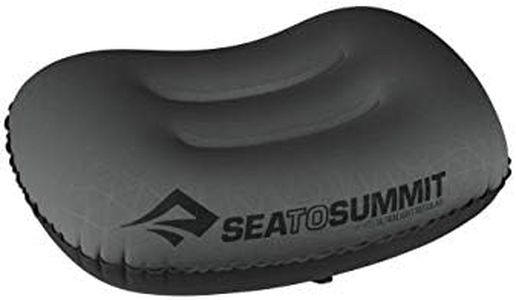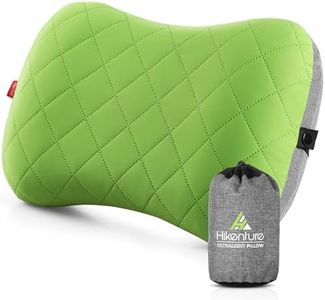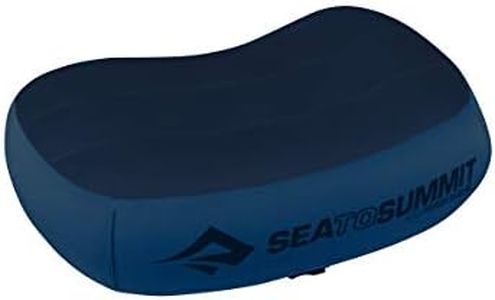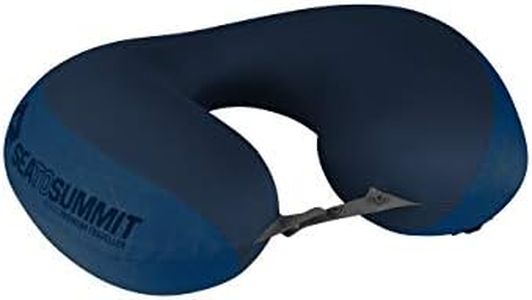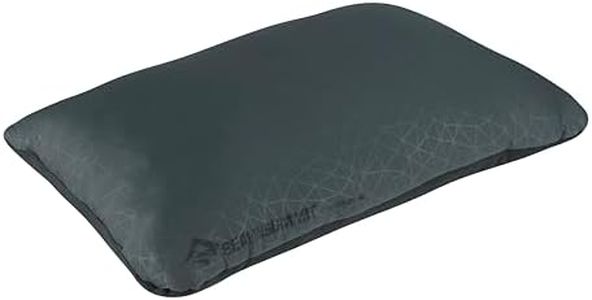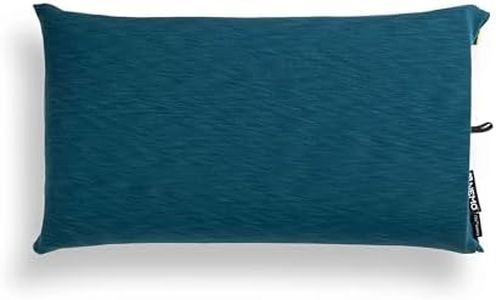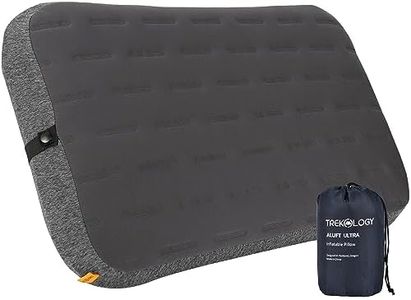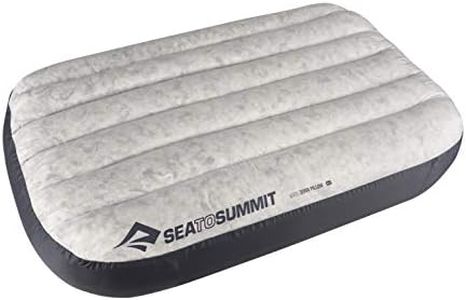We Use CookiesWe use cookies to enhance the security, performance,
functionality and for analytical and promotional activities. By continuing to browse this site you
are agreeing to our privacy policy
10 Best Backpacking Pillows
From leading brands and best sellers available on the web.Buying Guide for the Best Backpacking Pillows
Choosing a backpacking pillow is all about maximizing your comfort while keeping your backpack light and easy to carry. Whether you’re going on a single overnight hike or a multi-day trek, the right pillow can make a huge difference in the quality of your rest. Start by thinking about how you usually sleep, what kind of support you need, how much space you have in your pack, and how much setup you are willing to do at the end of a long day.Weight and Packed SizeWeight and packed size are about how heavy the pillow is and how small it gets when compressed into your backpack. These are important because carrying less weight and bulk is crucial while backpacking. Pillows can range from ultralight, compact models that nearly disappear in your bag, to slightly heavier ones that offer more comfort. If you’re a minimalist or going on long treks, aim for the lightest and most compact option. If you don’t mind a bit more weight for better sleep, you can go for a slightly bulkier pillow.
Fill Type (Inflatable, Foam, Hybrid)The fill type refers to what’s inside the pillow—usually air (inflatable), foam, or a combination of both (hybrid). Inflatable pillows are very light and pack down small, but may feel less plush and can slide more easily. Foam pillows provide a more traditional pillow feel and are softer, but are bulkier. Hybrid pillows combine air and foam for a balance between comfort and packability. If you want to save space and weight, inflatable is best, whereas foam is preferable if soft comfort is your top priority. Hybrids are a great middle ground.
Support and LoftSupport and loft refer to how much the pillow props up your head and neck. This matters for spinal alignment and overall comfort. Loft can vary with different pillows, from low-profile options (good for stomach sleepers) to thick, supportive ones (ideal for side sleepers). Consider your sleeping style—side sleepers often need more height, whereas back or stomach sleepers generally prefer less. Many inflatable pillows let you adjust the loft by adding or releasing air.
Fabric and Surface ComfortThe pillow’s fabric and surface comfort determine how it feels against your skin and how noisy or slippery it might be at night. Some pillows have soft, brushed fabrics for coziness, while others use durable, but potentially slick materials to save weight. If you’re sensitive to textures or tend to move around a lot in your sleep, look for a pillow with a comfortable, non-slippery surface. Some pillows let you add your own clothing as an outer layer for extra coziness.
Ease of Use and MaintenanceEase of use is about how quickly you can set up or pack away the pillow, and maintenance is about how easy it is to keep clean. Inflatable models usually inflate with a few breaths and deflate quickly, but can require more effort if you’re tired. Foam pillows are always ready but can be a bit bulkier to repack. Consider how much patience you have for setup and whether you’d prefer something machine washable for easy cleaning after your trip.
